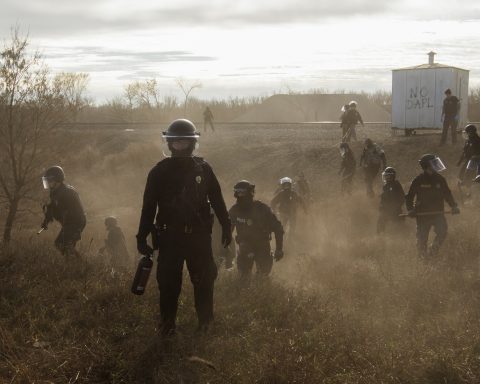In the past two months, I swam in two of the most beautiful places on our planet.
In the Yucatán Peninsula in Mexico, I snorkelled with giant sea turtles alongside bleached coral reefs and explored parts of a 180-kilometre semicircle of cenotes, majestic underground caves filled with azure water that the Maya believed was a gateway to the underworld.
The cenotes formed around the impact zone of a colossal 10-kilometre-wide asteroid that crashed into Earth 66 million years ago. The impact set off mega-tsunamis and ignited fires that blazed through an estimated 70% of the world’s forests. All told, scientists reckon it killed off 75% of all life on Earth.
In the Red Sea off the coast of Sharm el-Sheikh, Egypt, where the recent UN global climate talks were held, I was blown away by the vibrant pink, orange and turquoise colours of the coral reefs. They were teeming with schools of majestic heart-shaped neon-yellow and -green fish, as well as one turtle, which had a Michael Phelps–like stroke, quickly leaving me in its wake. So much for the myth about turtles being slow – at least not when they are in their element.
Which made me wonder if the same might be true about humans and our race to a low-carbon economy.
Just as turtles are slow on land but can turn on their jets when they’re wet, humans tend to make a dash when cash is involved. But we are plodding along on climate action. The difference between what corporations and governments say and do (or the “say–do” gap) looms stubbornly large despite spiralling climate-commitment inflation. The first thing we need to do to close the gap is cut out the poison that is at the heart of our climate breakdown.
That means finally cutting out the annual US$6 trillion in subsidies to fossil fuels, which account for two-thirds of global greenhouse gas emissions.
It also means cutting off financing for new fossil fuel projects, which HSBC (one of the largest banks in the world) and Lloyds (the largest domestic bank in the U.K.) have done for new oil and gas fields – with some caveats. We will know that the rest of the US$130-trillion GFANZ (Glasgow Financial Alliance for Net Zero) coalition is serious when they follow suit.
And it means stopping all finance for activities that are killing our forests – a mistake the Mayans made that we are now repeating. Deforestation accounts for 11% of global greenhouse gas emissions, more than comes out of the tailpipes of all 1.4 billion cars on the world’s roads. If we went a step further than putting a stop to ripping out our forests and mangroves and started to restore them, we could get almost 40% of the way to our Paris Agreement goals by 2030.
But as former Bank of England (and Canada) governor Mark Carney has made clear, “the biggest threat to achieving 1.5 degrees is the speed at which we invest, not divest. We need at least $4 in clean energy investment for every $1 maintaining fossil fuels until we can phase them out by the end of this decade.”
The good news is that over the past decade, the flow of money into clean energy and efficiency infrastructure has tripled to about US$1 trillion annually.
This decade we need to move faster, quadrupling current levels of investment to the US$4 trillion annually (4% of global GDP) that is required, according to the International Energy Agency.
Finance ministers hold the keys to unlocking climate action. Fortunately, a new group, called the Coalition of Finance Ministers for Climate Action, from more than 80 countries, is looking to shift the view of climate action from a cost to a unique growth and investment opportunity. These finance ministers recognize that the current energy crisis and growing incidence of climate hazards are an opportunity for more, not less, action. And a rapid switch to renewable energy presents an opportunity for countries to deliver clean, cheap, secure energy and new employment at the same time.
Finance ministers globally manage huge annual budgets that collectively add up to around 30% of GDP. Mobilizing 4% of global GDP for climate action is not going to happen without backing from heads of state, most critically those from the G20 countries. It is a tall task but one with precedent. It wasn’t that long ago that governments mobilized trillions of dollars to keep businesses and workers afloat during the early days of the COVID-19 pandemic.
In 1962, spurred on by the Soviet Union making Yuri Gagarin the first man to orbit Earth, John F. Kennedy gave his moonshot speech at Rice University in Houston.
“We choose to go to the moon in this decade and do the other things not because they are easy, but because they are hard, because that goal will serve to organize and measure the best of our energies and skills, because that challenge is one that we are willing to accept, one we are unwilling to postpone, and one which we intend to win.”
That bold invocation was then backed by billions of dollars.
Eight years later, on July 20, 1969, two American astronauts walked on the moon’s surface.
History doesn’t repeat itself, but it rhymes. Money was an accelerant for the mission to the moon.
Today’s moonshot is addressing the climate crisis, and what gets funded, gets done.
Time for our heads of state and finance ministers to take the plunge and turn on the jets – just like our shelled friends in the sea.





